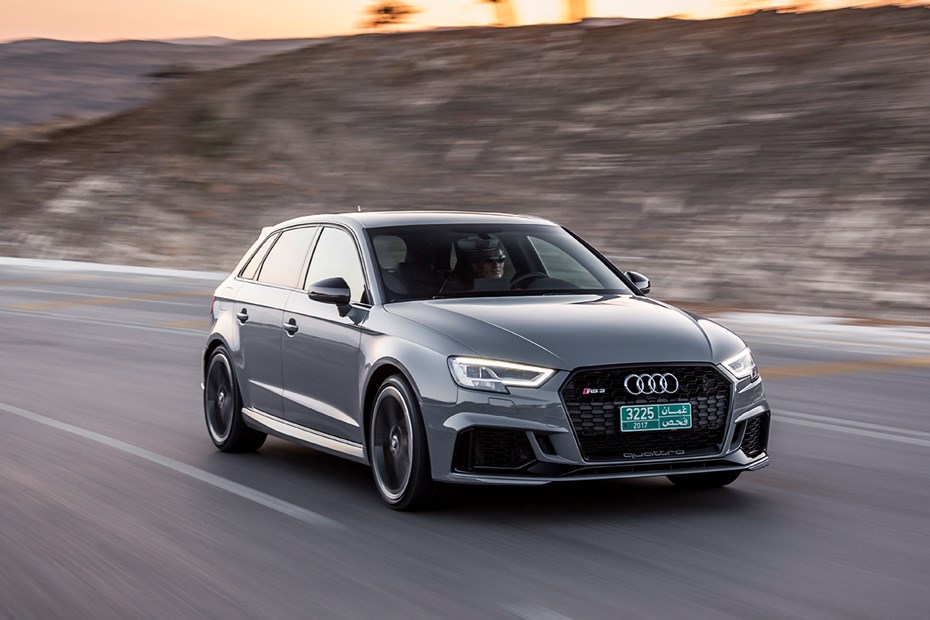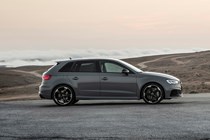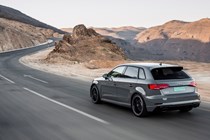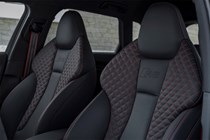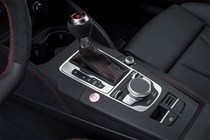The Audi RS 3 Sportback is a next-level hot hatchback propelled by the same scorchingly powerful 2.5-litre motor as the Audi TT RS.
It now develops 400hp – 33 horses more than the old car and more in fact than any other performance five-door – out-muscling the Ford Focus RS, Mercedes-AMG A45 and VW Golf R.
The power-hike isn’t the only thing on offer either; it comes as part of a wider equipment update to bring the fastest version of the Audi A3 in line with the rest of the range.
Just how fast is the Audi RS 3?
Disrespectfully fast – this is a family hatchback that can keep up with a Porsche 911 Carrera S from 0-62mph (it’s actually faster than manual gearbox equipped versions), completing the benchmark sprint in 4.1 seconds.

Importantly, it’s a tenth faster than the Mercedes-AMG A45, the RS 3’s closest rival. These two cars have been playing one-upmanship since their inception and for the time being at least, the Audi has nudged ahead.
That 2.5-litre, five-cylinder motor means the RS 3 sounds fantastic and also spreads its power over a wide band – peak torque is available from a convenient 1,700rpm and the acceleration doesn’t let up until 7,000rpm. Rivals with 2.0-litre, four-cylinder units simply can’t offer this mix of usability and high-revving excitement.
So it’s all about the engine then?
In the past Audi’s entry to RS ownership could have been accused of being a bit two-dimensional – hilariously fast in a straight line but not much fun in corners.
While the new car hasn’t been blessed with the sort of laugh-out-loud cornering characteristics of the Ford Focus RS, this updated model is certainly more involving to drive.

A 26kg engine weight loss endows it with better agility when you first turn the wheel and retuned Quattro all-wheel drive allows the back end to step out under the right provocation.
On the whole though, it’s still a bit of a join-the-dots car, with huge levels of grip giving way to safe and predictable understeer in normal driving conditions (where the front of the car slides wide if you accelerate into a corner too fast) – which ultimately is what RS 3 customers want.
What extra equipment does the Audi RS 3 get?
In terms of performance upgrades you’ll notice the sportier stance – the RS 3 has been lowered by 25mm and has an extra 20mm of width between the front tyres.
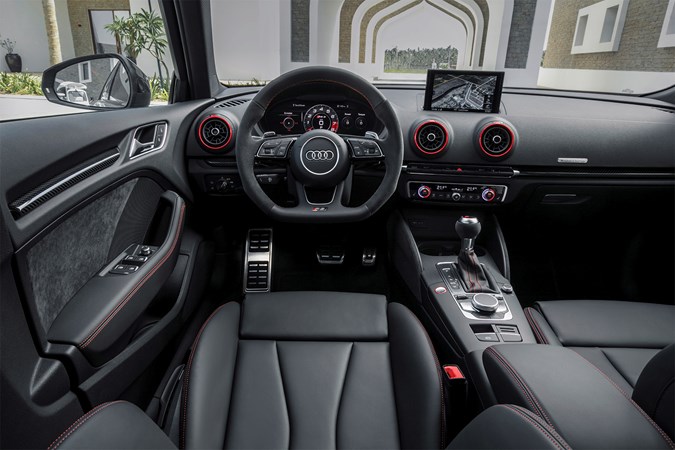
There’s a special RS braking system (front carbon ceramic stoppers are an option) while the styling has been given an aggressive edge thanks to 19-inch wheels, a honeycomb grille, larger air inlets, flared wheel arches, roof edge spoiler, and RS exhaust system with large oval tailpipes.
In terms of technology you can also get:
- LED headlights and tail lights (Matrix LEDs available at a cost)
- Sport seats in black Nappa leather
- Audi Virtual Cockpit – optionally replaces standard analogue dials with a 12.3-inch screen
- Dual zone climate control
- Parking System Plus with front and rear sensors
- Sat-nav on a 7.0-inch screen
- Audi Smartphone Interface with Apple Car Play and Android Auto
- Launch control system for speedy getaways
Bootspace remains 335 litres (or 1,175 with the rear seats folded flat) and despite its sports car-beating ability the RS 3 is a very practical car – with comfortable seating for four adults and flexible storage options thanks to the roof rail system.
Verdict
The Audi RS 3 has always sold well on its offering of barmy straight-line performance and all-weather usability, rather than outright dynamic prowess. There isn’t a lot of point in reinventing the wheel.
While this new car is certainly more fun to drive than the old one, a Ford Focus RS or Honda Civic Type R are still more entertaining companions on a twisty road. They’re significantly cheaper, too.
However, in terms of outright performance and engine character it’s certainly the hot-hatchback to beat – there has never been more daylight between it and the Mercedes-AMG A45.
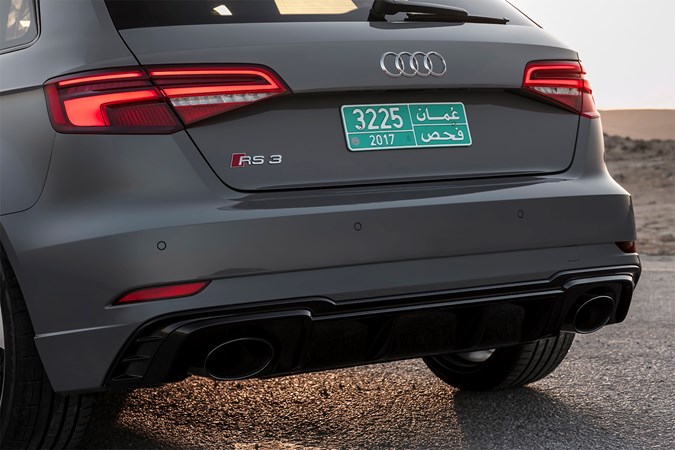
Just so you know, we may receive a commission or other compensation from the links on this website - read why you should trust us.


